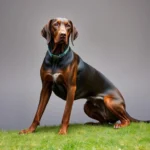
Introduction
Dog breeds come in countless varieties, each with unique characteristics, temperaments, and care requirements. Among these, the Skypoo has gained popularity as a delightful companion for families and individuals alike. This charming breed combines the affectionate nature of the Sky (Sky Terrier) and the intelligence of the Poodle, resulting in a dog that is both fun-loving and smart.
Understanding the Skypoo involves exploring its origins, physical traits, behavioral characteristics, and care needs. This information is crucial for anyone considering adding a Skypoo to their family, ensuring they are well-prepared for the responsibilities of pet ownership.
What is a Skypoo?
A Skypoo is a designer breed that results from crossing the Sky Terrier with a Poodle. The name itself is a blend of the two parent breeds, representing their lineage and unique qualities. Designer breeds like the Skypoo have become increasingly popular in recent years, appealing to those seeking specific traits from both parent breeds.
Distinct Characteristics of the Skypoo
Skypoos are known for their adorable appearance and engaging personalities. They typically vary in size, depending on whether a toy or miniature Poodle is used in breeding. Their coats can be curly, wavy, or straight, often exhibiting a variety of colors, including black, white, gray, and combinations of these hues.
In terms of temperament, Skypoos are generally friendly, social, and intelligent. They bond closely with their families and are known to be affectionate companions. Their playful nature makes them great playmates for children, while their intelligence facilitates training and learning new tricks.
Physical Characteristics of the Skypoo
Size and Weight Range
A Skypoo typically weighs between 10 to 20 pounds, making it a small to medium-sized dog. Their height can range from 10 to 15 inches, depending on their Poodle parent. This size makes them an ideal choice for families living in apartments or smaller homes.
Coat Type and Maintenance
The Skypoo boasts a soft, often hypoallergenic coat, which is one of the reasons they are favored by allergy sufferers. Their coat requires regular grooming to prevent matting and tangling. Most owners find that brushing their Skypoo two to three times a week is sufficient to keep the coat looking its best.
Shedding is minimal, but occasional baths will help maintain cleanliness and skin health. It’s essential to choose appropriate grooming tools, such as a slicker brush and a comb, to ensure thorough care for their unique coat type.
Common Health Issues
Like all breeds, Skypoos can be prone to certain health problems. Due to their lineage, they may experience issues such as:
- Eye Problems: Conditions like cataracts and progressive retinal atrophy can occur.
- Skin Conditions: Allergies and skin irritations may arise, especially if grooming is neglected.
Regular veterinary check-ups and a watchful eye for any signs of discomfort can help in managing these potential health concerns.
Temperament and Behavior
General Temperament of the Skypoo
The Skypoo is known for its affectionate and sociable nature. They thrive on human interaction and are generally good with children and other pets. Their friendly demeanor makes them an excellent choice for families, as they enjoy being part of the action and are eager to please.
Behavioral Traits
Skypoos have moderate energy levels, requiring daily exercise to keep them happy and healthy. Activities such as walks, playtime in the yard, or engaging in dog sports can help fulfill their exercise needs.
In terms of compatibility, Skypoos tend to get along well with children and other pets, making them versatile companions. However, socialization from an early age is crucial to ensure they develop into well-rounded adults.
Training and Socialization
Training and socialization are essential for any dog, and the Skypoo is no exception. Early training helps address behavioral issues and promotes a positive relationship between the dog and its owner.
Recommended Training Methods
Positive reinforcement techniques work best for Skypoos. Rewarding good behavior with treats, praise, or playtime encourages them to learn and obey commands. Consistency in training sessions, along with patience, will yield the best results.
Common Behavioral Issues and Solutions
While Skypoos are generally well-behaved, they can exhibit common behavioral issues such as excessive barking or separation anxiety. Here are a few strategies to address these problems:
- Barking: Teach the “quiet” command and reward silence. Regular exercise can also help reduce excessive barking.
- Separation Anxiety: Gradual desensitization to being alone can help. Start with short periods of separation and gradually increase the duration.
Health and Care Requirements
General Health Concerns for Skypoos
The average lifespan of a Skypoo ranges from 12 to 15 years, depending on genetics and care. Common health concerns include:
- Hip Dysplasia: A genetic condition that affects mobility.
- Dental Issues: Small breeds often suffer from dental problems; regular dental care is essential.
Nutritional Needs
A balanced diet is crucial for a Skypoo’s health. Owners should consider high-quality commercial dog food that meets their nutritional needs, or they may opt for homemade diets with proper guidance from a veterinarian.
Regular Veterinary Care and Vaccinations
Routine veterinary visits ensure that your Skypoo remains healthy. Keeping up with vaccinations and preventive treatments for parasites is vital for their overall well-being.
Living with a Skypoo
Ideal Living Conditions
Skypoos adapt well to various living environments, whether in an apartment or a larger home. Their small size allows them to thrive in limited spaces, as long as they receive adequate exercise.
Exercise Requirements and Activities
Daily walks, play sessions, and mental stimulation activities, such as puzzle toys, are essential for keeping a Skypoo engaged. They enjoy interactive games and training exercises that challenge their minds.
Travel Considerations
Skypoos can be excellent travel companions due to their manageable size. When traveling, ensure they are comfortable in their carriers, and plan for regular breaks during long journeys to allow them to stretch their legs.
Pros and Cons of Owning a Skypoo
Advantages of Having a Skypoo as a Pet
- Companionship: Skypoos are affectionate and loyal, making them excellent companions.
- Adaptability: Their small size and friendly nature allow them to fit into various living situations.
- Low-Shedding Coat: Ideal for allergy sufferers or those who prefer a cleaner home.
Potential Challenges and Drawbacks
- Grooming Needs: Regular grooming is necessary to maintain their coat, which may require time and effort.
- Potential for Separation Anxiety: Their strong attachment to owners can lead to anxiety when left alone.
Conclusion
The Skypoo is a delightful breed that brings joy and companionship to those lucky enough to have one. With their charming personality, adaptability, and low-shedding coat, they make excellent pets for various lifestyles. However, potential owners should weigh the grooming needs and potential behavioral challenges against the many advantages of having a Skypoo as a furry friend.
Ultimately, for those seeking a loving and intelligent companion, the Skypoo is a breed worth considering. Their playful nature and ability to bond closely with their families make them a wonderful addition to any home.









